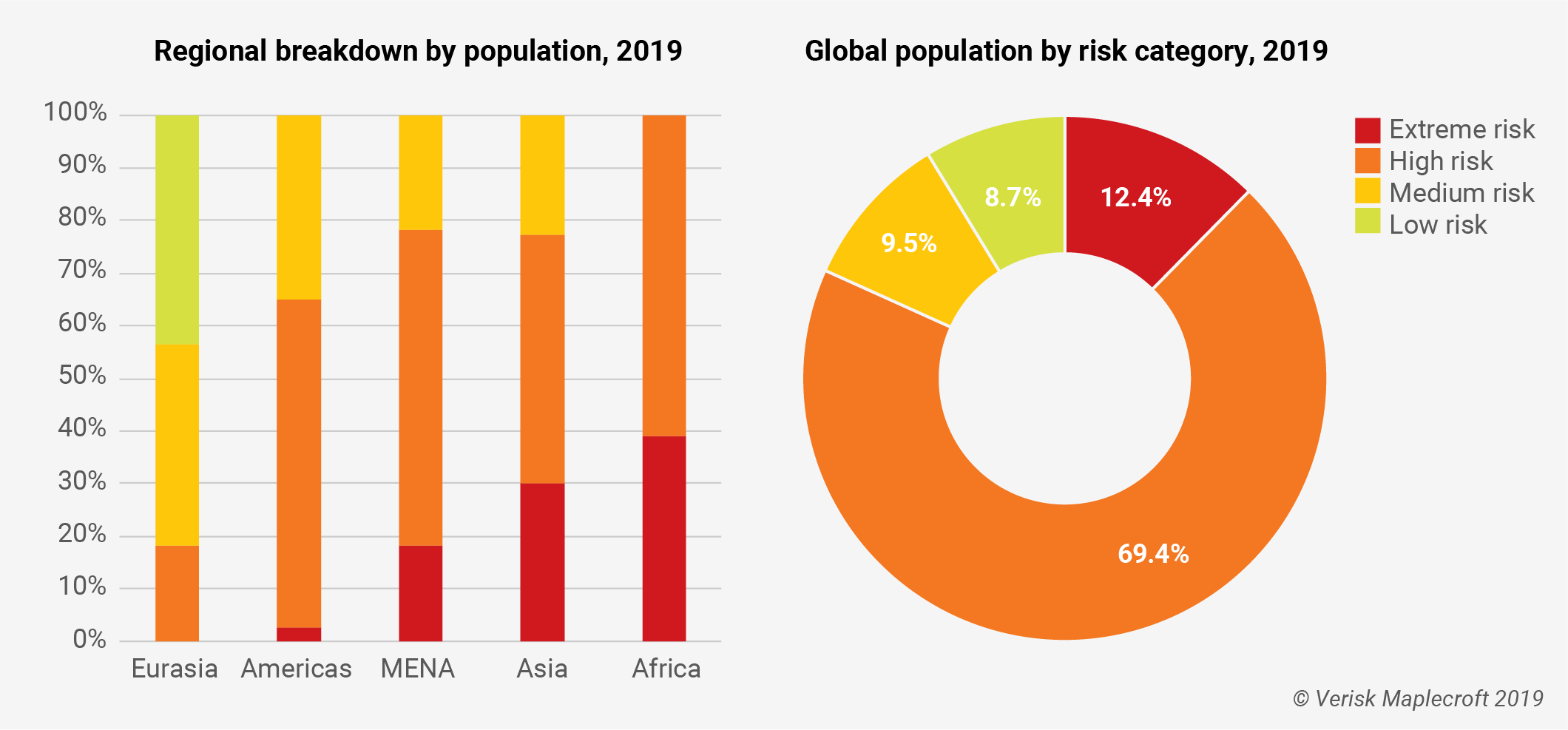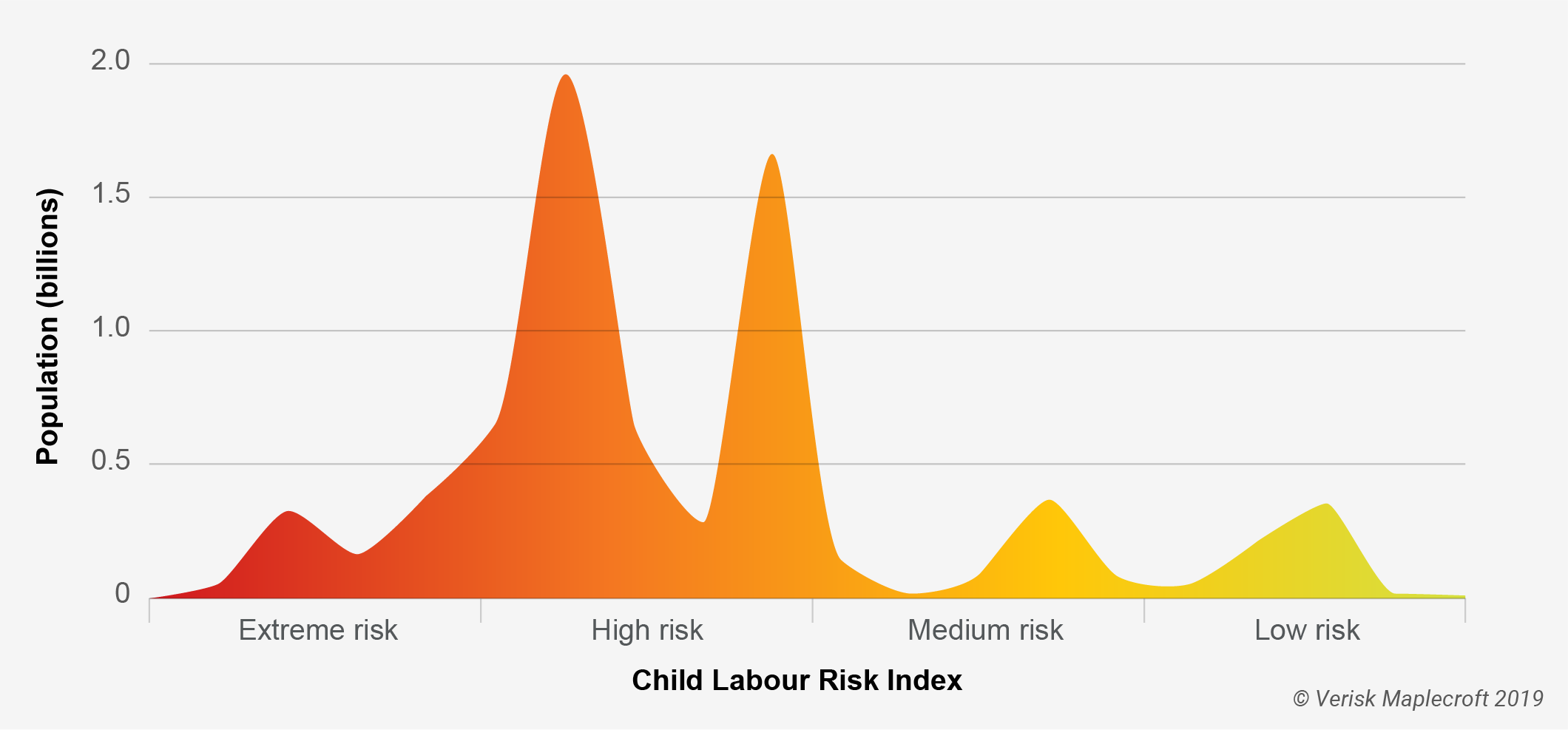Despite high levels of economic growth and improvements on poverty and education, progress on child labour has stalled in the manufacturing countries most entwined with global supply chains.
These are the key findings of our latest annual Child Labour Index, which shows that manufacturing hubs, including China, India, Bangladesh, Vietnam and Cambodia, have registered no tangible improvement in the ranking of 198 countries since 2016.
Nearly 1 billion living in countries where child labour poses an ‘extreme risk’
To put the issue of child labour in context, we’ve identified 27 countries – which account for roughly 12% of the world’s total population, or 900 million people – as ‘extreme risk.’
The 10 worst performing countries in 2019 are:
- North Korea (ranked 1st and highest risk globally)
- Somalia
- South Sudan
- Eritrea
- Central African Republic
- Sudan
- Venezuela
- Papua New Guinea
- Chad
- Mozambique
The index, which we developed to enable companies to identify where the risk of association or complicity with child labour is highest in their supply chains, measures the frequency and severity of violations, a country’s adoption of laws and international treaties, and its ability and will to enforce them.
With 5 of the 10 highest risk countries, East Africa is the highest risk region.
Child labour still present in manufacturing supply chains
A further 82 countries are categorised as ‘high risk’ in the index, including Asia’s economic giants India (ranked 47th) and China (98). The research shows that despite meteoric economic growth, there has been little or no improvement in their index scores in recent years.
Worryingly for organisations with extended supply chains, this trend is echoed across many manufacturing countries, including Ethiopia (30), Bangladesh (44), Turkey (63) and Vietnam (81), where the high risk of children being exploited or having to work through necessity remains unchanged.
The economic momentum of many countries is yet to trickle down to the poorest in society and any meaningful headway on labour rights issues, including child labour, remains elusive,”
-Oscar Larsson, Human Rights Data Analyst
Child labour is still prevalent across many sectors – if countries aren’t taking action it is up to companies to make sure it’s not happening under their watch.
Red flags for sustainable procurement in China and India
While China and India are categorised as ‘high risk’ overall, it’s important to note that they are scored as ‘extreme risk’ in the section of the Child Labour Index measuring the frequency and severity of violations. Both have signed up to all relevant international treaties, which improves their position in the ranking, but unlike China, India’s domestic laws fall short of ILO standards on the legal working age of 15, and its enforcement capabilities lack significant resources and coverage. These factors ensure that South Asia’s largest economy is among the 25% worst performing countries globally.
According to our Industry Risk Data, agriculture, manufacturing, apparel, construction, mining and hospitality all pose high levels of risk in both countries. Trafficking and commercial sexual exploitation of children are also severe issues.
Child labour in Venezuela, Cambodia on the rise
Meanwhile Myanmar shows improvement
The country seeing the highest increase in child labour risks is Venezuela. Continuing political and social instability has seen it fall 80 places in the index since 2016 and it now ranks 7th highest risk globally. Other notable countries seeing an increase in risk include Nigeria and Cambodia, both of which have dropped into the ‘extreme risk’ category.
On the flipside, 57 countries have registered significant improvements in the index between 2017 and 2019 and feature sourcing locations tied to global supply chains. Liberia has risen 44 places in the index to 58th; Myanmar improved from 3rd highest risk globally in 2018 to 27th this year; while Madagascar has climbed 20 places to 45th since 2017. The index shows that all three countries have increased their enforcement capabilities and commitments towards fighting child labour, but Myanmar has also experienced fewer reported violations.


